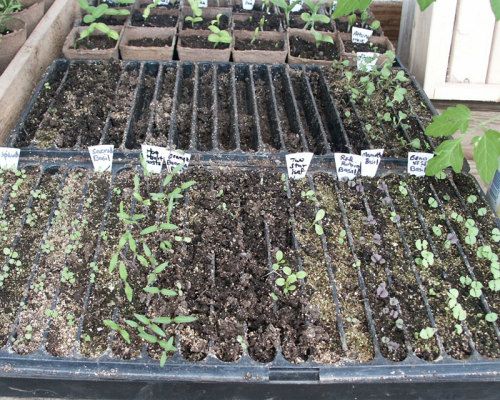
If you haven’t grown plants from seed before, it is a fairly easy and very rewarding project. Growing lettuce and baby salad greens are some of the easiest and most satisfying crops to start with since they germinate fairly easily and grow quickly—you can actually begin to harvest some in about 30 days!
Getting started
If you think you might like to grow some herbs from seed, I recommend trying to grow annuals for some of your first experiments. Basil, chervil, coriander, dill, parsley, and summer savory can all be sown in the same manner. Most of us tend to need a larger quantity of annual plants then perennials; for instance, we grow a row of basil in our gardens and sow whole packets of cilantro and dill at once, but we might only have a one or a few sage or rosemary plants. So when sowing perennials, the home gardener probably won’t need to sow as many perennial seeds as annuals, unless of course you are growing plants for others or planning on swapping some. If new to gardening, you may want to buy a few perennial herb plants this year, and try your hand at slower growing perennials next year.
| All successful gardening depends on preparing the earth well. If you have space in the ground, cultivate the soil deeply, adding sand, organic materials, and fertilizers as necessary. A soil test will provide information as to soil type, pH, and recommended additives. If you are an organic gardener, you will find that most plants thrive in this kind of environment. I have always had lush, healthy herbs, flowers and vegetable plants without any pesticides, other than occasional sprays of Safer’s Soap™, Neem, or a garlic-chile pepper spray. |
There are many vegetables that are easy to grow from seed, however they take up a lot more space than salad or most herbs—so you need to figure out how much garden space you have to work with—or how many containers you have to plant in. A garden plan is a good idea, or, if growing vegetables in containers; remember that you are going to have to water them just about everyday or at least every other day in hot weather. We gardeners, both beginning and experienced are over eager and tend to get so excited at the beginning of the season, we plant way too many seeds and buy more plants than we have room for.
Anywhere from 6 to 100 seeds might come in a single seed packet depending upon what it is. I often order seeds with others and share packets—since most of us don’t need 50 habanero or parsley plants. Remember that you do not have to plant the whole pack—you can do just a row in a flat or even just a few seeds in a few marketpacks or pots.
Sowing seed outdoors and indoors
Seed can be sown directly in the ground after all danger of frost is past. Work up a bed or an area with compost to enrich the soil. The soil should have a fine texture and good drainage.
Indoors, start the seed in flats or small plastic pots that are brand new, or if used, they need to be scrubbed clean and dipped in a 10% bleach solution. Prepare these by filling them with a seed-starting mix like Promix ™ which is a soilless potting medium, or make your own by combining equal parts spaghnum peat with perlite or vermiculite. Dampen this medium thoroughly before sowing seed. It should not be soaking wet. Place two or three seeds in each pot or make rows in a flat. Seeds planted in rows, rather than scattered, have fewer problems after germination because of improved air circulation. Cover the seeds lightly with a thin layer of dampened potting mix. Cover germinating flats with a plastic dome or plastic wrap to preserve moisture. Be sure to put tags in the flats so that you know what you are growing, or keep a notebook with a sketch. I make notes in my gardening journal of when I sow seed, days they germinate, when I transplant, etc.
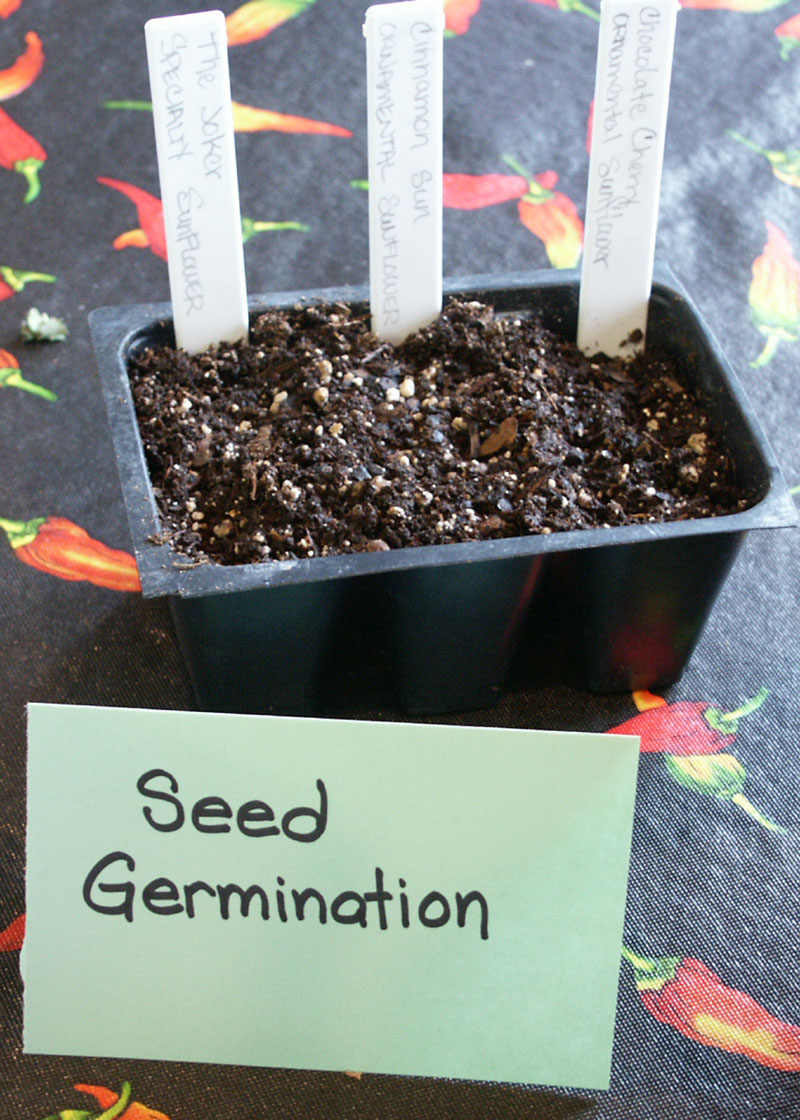 |
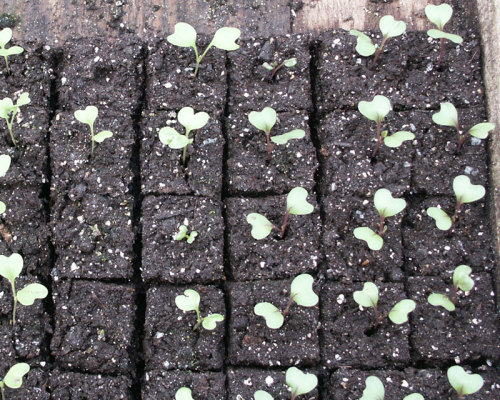 |
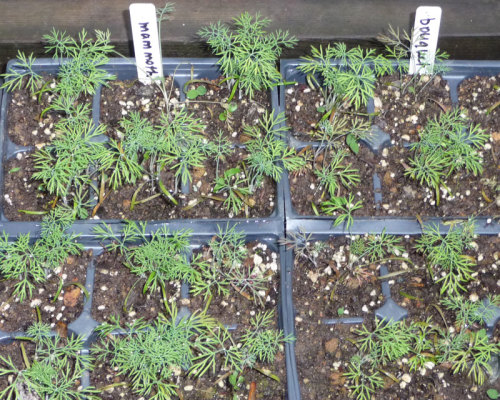 |
||
| At left, newly planted cell packs are labeled. Above: arugula seedlinss have just emerged (left), and dill seedlings (right) are a bit farther along. | ||||
Patience, patience
Most seeds germinate in a warm dark, place, so a heat mat is very useful but not absolutely necessary for germinating seed. They should sprout in a week to ten days; some sprout in a few days while others like parsley may take longer. For instance, some lettuces might germinate in two days, while some chile peppers take more than two weeks. So be patient. Once your seeds have germinated, move them to the light. I use grow lights early in the season; a twin-tube fluorescent grow light will speed sturdy development, but a sunny window or cold frame will suffice.
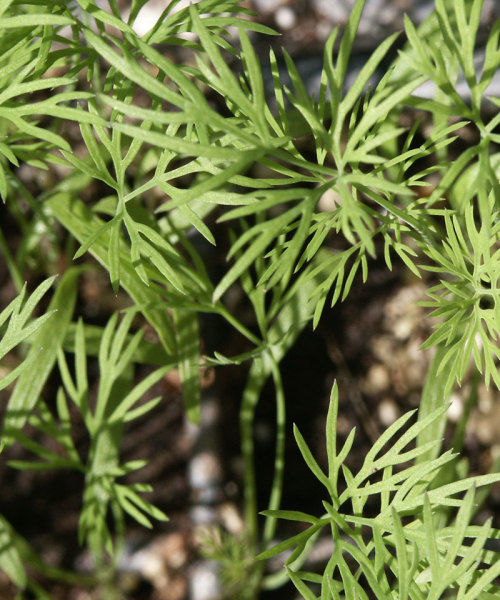 |
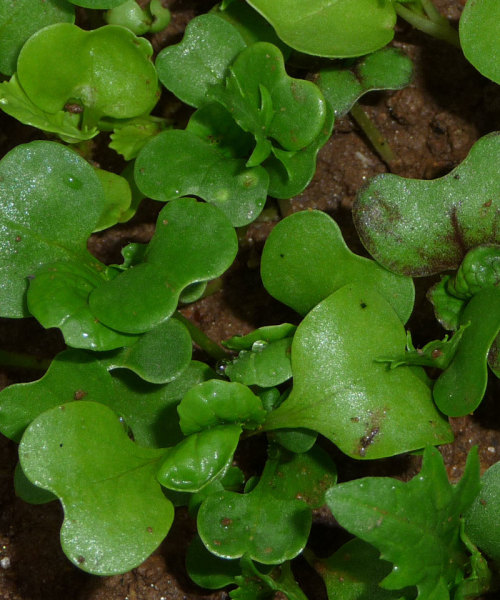 |
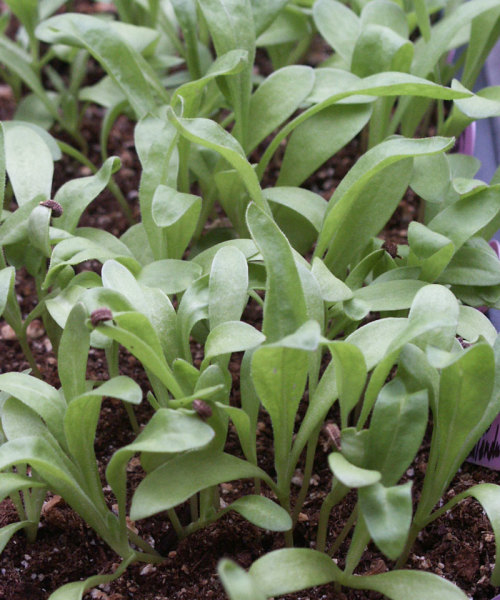 |
||
| Emerging seedlings have a distinctive look. From left to right: dill, radish, calendula. | ||||
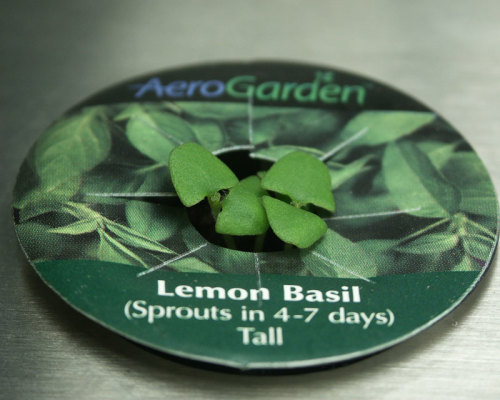 Here are the baby herbs started just a week ago in my AeroGarden. |
Water with a fine mist. The soil should be kept evenly damp but not wet, and never allowed to dry out. You can tell when the flats need water by the color of the medium and the weight of the container. Take care not to over water or the plants may rot at the soil level.
When the seedlings are one to two inches tall, fertilize them lightly; I use kelp/fish emulsion. Once they reach three or four inches in height, and possess two to four true leaves, they may be transplanted into pots for further development, or into the garden.
We’ll talk more about that in a few weeks.


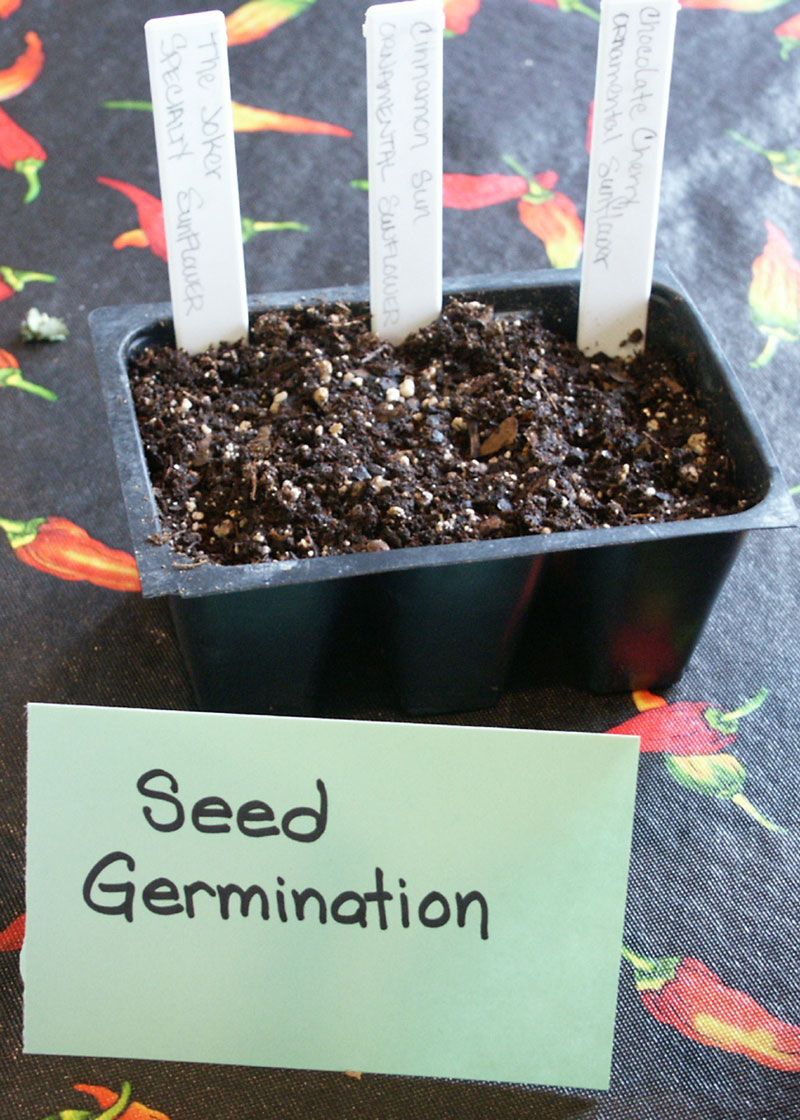
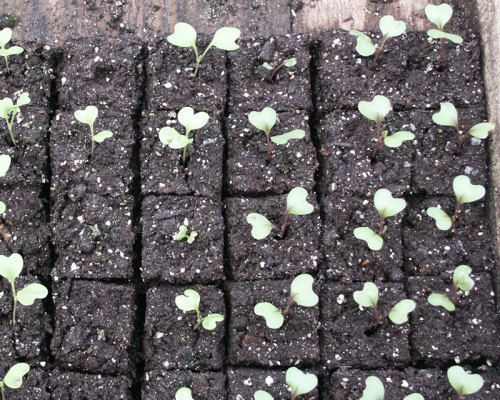
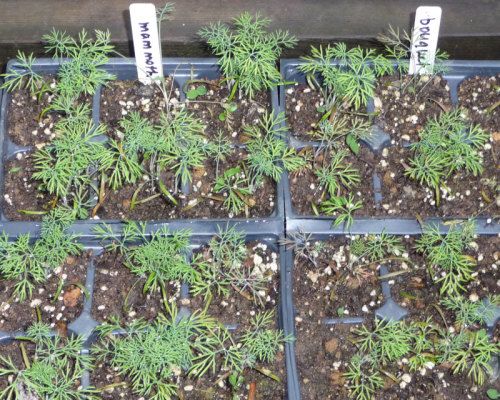
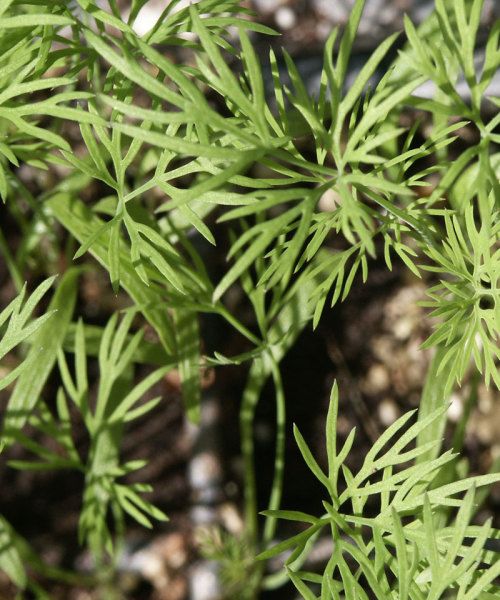
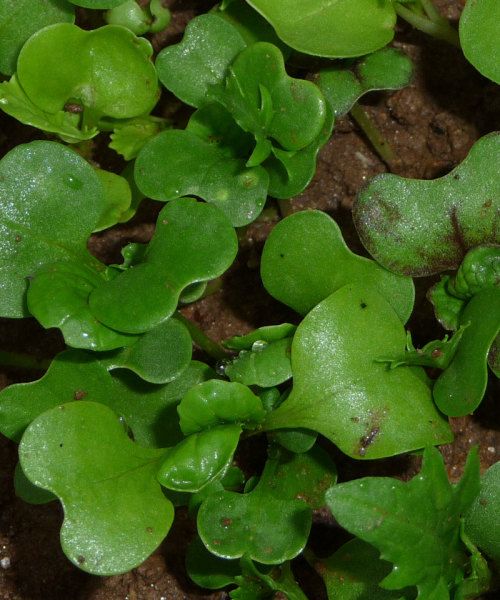

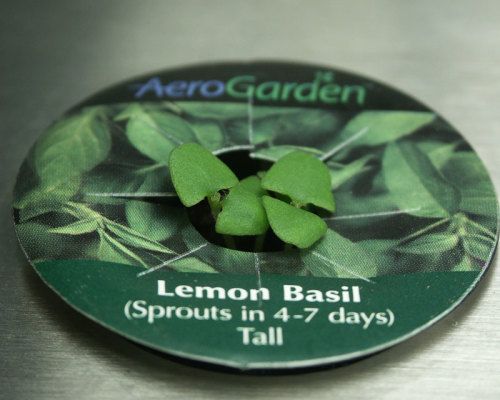
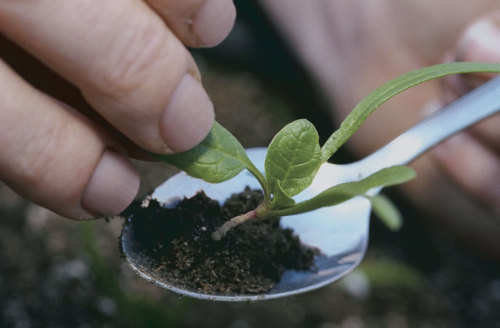
















Comments
Log in or create an account to post a comment.
Sign up Log in